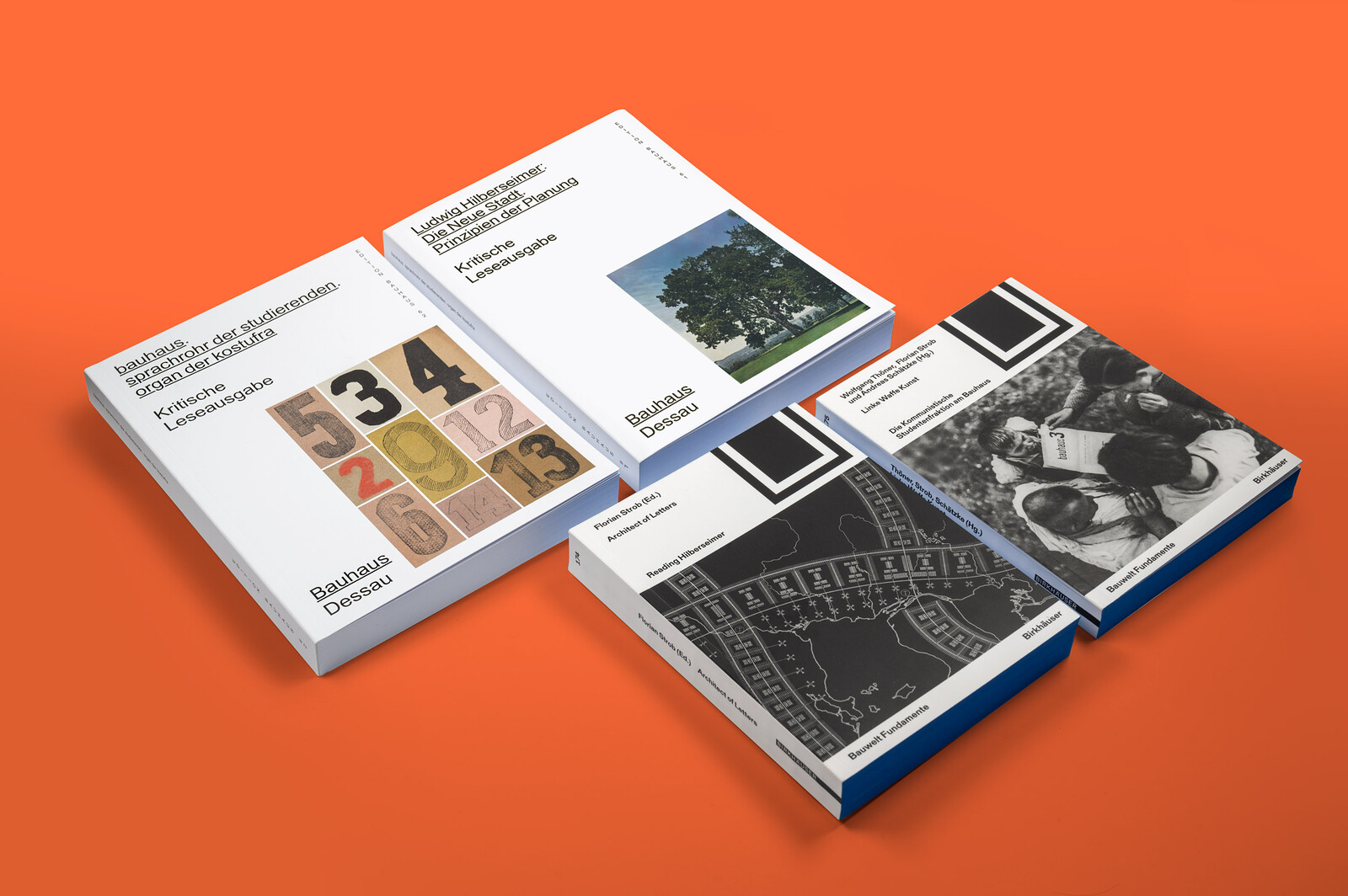Bauhaus Dessau Foundation releases new publications on Bauhaus Written Heritage. The cultural heritage of the Bauhaus includes a wealth of programmatic architecture, design objects, and works of art, as well as design and pedagogical positions with principles that have been adopted and further developed internationally. At the same time, this heritage includes an extensive corpus of texts that has received rather little attention to date. Yet the writing and publishing of theoretical, literary, and administrative texts was one of the essential features of the Bauhaus as a school of modernism. Almost all of the teachers and quite a few of the students left behind written sources from the time of their affiliation with the Bauhaus. These texts are an integral part of their work, their teaching, and their studies.
The project Bauhaus Written Heritage (2020–22) was the first to systematically and critically address this textual heritage. It provides an innovative approach to the understanding of the historical Bauhaus and offers a basis for further research.
The research results accessible online include an annotated index of the published texts and archival sources of the design school, dating from the period 1919 to 1933, as well as two exemplary critical editions of the journal of the Communist Student Fraction (Kostufra) at the Bauhaus (1930–32) and the monograph The New City: Principles of Planning (1944) by the architect and Bauhaus teacher Ludwig Hilberseimer. Developed in collaboration with the Thuringian University and State Library Jena.
Further publications include
Architect of Letters: Reading Hilberseimer
Edited by Florian Strob
Vol. 174 of Bauwelt Fundamente, published by Birkhäuser
English, 336 pages
Link here.
Ludwig Hilberseimer (1885–1967) is considered one of the leading and most controversial theorists of modern architecture in Weimar Republic Germany. Wide-ranging new perspectives make the case for the contemporary relevance of his multifaceted work beyond functional urbanism.
Contributions by Andreas Buss, Scott Colman, Benedict Clouette, Magdalena Droste, Alexander Eisenschmidt, Alison Fisher, Christa Kamleithner, Plácido González Martínez, Christine Mengin, Sandra Neugärtner, Philipp Oswalt, Lutz Robbers, Andreas Schätzke, Robin Schuldenfrei, Florian Strob, Anna Vallye, Charles Waldheim
Linke Waffe Kunst: Die Kommunistische Studentenfraktion am Bauhaus
Edited by Wolfgang Thöner, Florian Strob, and Andreas Schätzke
Vol. 175 of Bauwelt Fundamente, published by Birkhäuser
German, 224 pages
Link here.
The journal of the Communist Student Fraction (Kostufra) was the medium for unsparing criticism of events, teaching content, and instructors at the Bauhaus. These reappraisals make clear that the experimental significance of the Bauhaus cannot be separated from political radicalism.
Contributions by Peter Bernhard, Regina Bittner, Anke Blümm, Marcel Bois, Ute Brüning, Magdalena Droste, Laura Gieser, Karoline Lemke, Sandra Neugärtner, Elizabeth Otto, Patrick Rössler, Andreas Schätzke, Ronny Schüler, Wolfgang Thöner
Ludwig Hilberseimer: Die neue Stadt; Prinzipien der Planung
Edited by Florian Strob and Karoline Lemke
Translated by Uli Nickel
Vol. 61 of Edition Bauhaus, published by Spector Books
German, 400 pages
forthcoming in February 2023
When the architect and Bauhaus teacher Ludwig Hilberseimer published his first book in English language, The New City: Principles of Planning, in Chicago in 1944, he had been working on the manuscript for twelve years. While The New City summarizes his teaching at the Bauhaus, it was curiously never published in German until now. This critical edition brings to the forefront the ecological backstory of this seminal text on urban planning, thus making a strong case for reevaluating the potentialities of classical modernism in the current climate crisis.
bauhaus. sprachrohr der studierenden. organ der kostufra: Kritische Leseausgabe
Edited by Wolfgang Thöner and Karoline Lemke
Vol. 62 of Edition Bauhaus, published by Spector Books
German, 344 pages
Link here.
As part of their efforts to gain influence at universities, the German Communist Party (KPD) launched the journal of the Communist Student Fraction (Kostufra) in 1922. A Kostufra cell was established at the Bauhaus in Dessau in 1927, and they published a magazine which appeared in fifteen hectographed issues between 1930 and 1932. The journal represents an important research desideratum that is met with this critical reader’s edition, based on the digital critical edition of the student journal, and providing context and commentary on its fifteen issues.
Bauhaus Written Heritage is a project of the Bauhaus Dessau Foundation and was funded by the Ministry of Science, Energy, Climate Protection and Environment of the State of Saxony-Anhalt.
Project lead: Florian Strob / Research associates: Laura Gieser, Karoline Lemke, Andreas Schätzke, Wolfgang Thöner / Research assistant: Annika Padoan / Project managers: Caroline Jansky, Clarissa Seidel, Ulrich Thöner, Anne-Zora Westphal.



